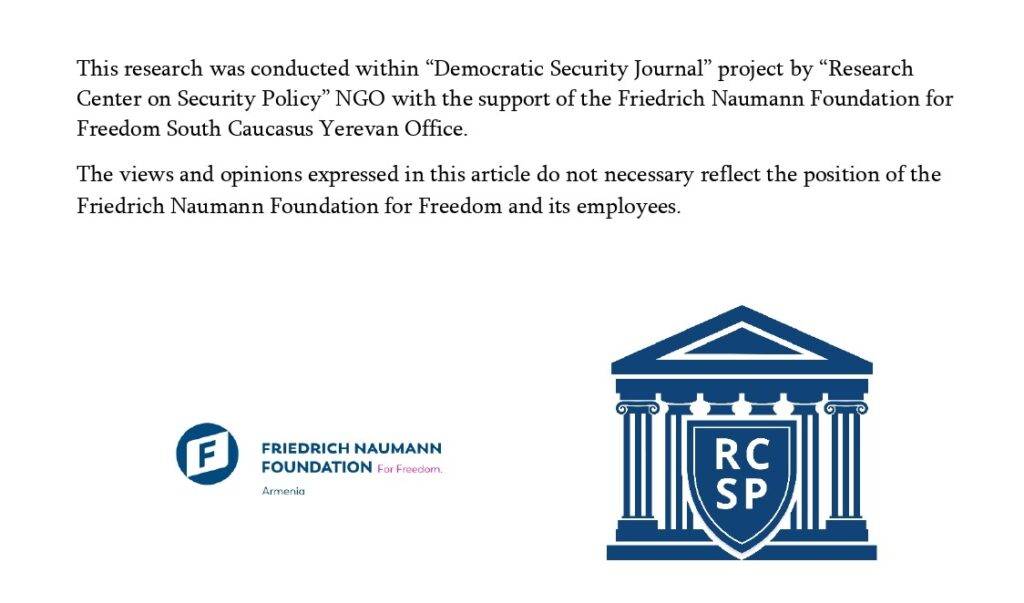General Information
Parliamentary elections are scheduled to take place in Armenia in the summer of 2026. Following the constitutional amendments of 2015 and the subsequent transition to a parliamentary system of governance, parliamentary elections have become the sole nationwide elections in Armenia. In this context, these elections have evolved into a key political event, and as they approach, their significance and weight within the public sphere increasingly intensify, intertwining with ongoing political processes and developments.
It is noteworthy that the last regular parliamentary elections were held in 2017. This fact reflects the presence of political tension, crises, and polarization over the past decade. To be fair, political crises and tensions have historically been more characteristic of Armenia’s contemporary era than their absence. In some respects, the snap elections of 2018 and 2021—despite their substantive differences—served to partially alleviate these aforementioned crises and tensions.
In a previous study[i], when discussing the achievements and prospects of democracy in Armenia, it was noted that the electoral processes meet the criteria for being considered democratic—namely, they are competitive and their outcomes are not predetermined. In this regard, it is important to consider elections within a democratic framework, generally speaking, and the 2026 parliamentary elections, in particular, as a mechanism for the redistribution of values, resources, and interests[ii].
The scenarios regarding the possible outcomes of the 2026 parliamentary elections are currently of particular interest, especially as the topic has entered the public discourse following the recent Gyumri municipal elections, which were analyzed in greater detail[iii]. The results of those elections have generated forecasts and served as a baseline for comparative assessments in the public arena.
Institutional Environment of the 2026 Elections
To outline possible scenarios, several preliminary observations must be made. First, politics—and specifically the scenarios discussed below, which pertain to an event one year away—are subject to numerous deviations and involve many variables. Therefore, it is necessary to state that, in the scenarios under consideration, the variables of time and political shocks are treated as fixed (controlled variables). The regional instability surrounding Armenia and the high security risks have the potential to fundamentally alter the logic of domestic political developments. Accordingly, within the context of this analysis, it is assumed that these risks will not materialize before the 2026 elections, and that domestic political developments will continue to follow the existing logic of path dependency.
Next, in order to discuss the scenarios effectively, it is essential to understand the institutional regulations within which the political processes of 2026 will unfold.
First and foremost, the factor of electoral law—particularly the right to be elected—must be considered. According to the Constitution, any individual who has reached the age of twenty-five, has been a citizen of the Republic of Armenia for the past four years, has resided continuously in Armenia during those four years, possesses voting rights, and is proficient in the Armenian language, is eligible to be elected as a member of the National Assembly. Concurrently, it is important to emphasize that the Constitution imposes identical requirements for members of the Government and the Prime Minister.
Based on the above, it currently excludes the possibility that certain politically influential figures circulating within various political agendas will be viable candidates for Prime Minister in the 2026 elections, particularly due to the exclusivity clause concerning Armenian citizenship. This is notable because in recent years such figures as Bagrat Galstanyan and Vardan Ghukasyan have managed to establish certain political platforms and capital, which will either be reformulated in the upcoming parliamentary elections or will entirely remain outside the process.
Another important institutional regulation concerns the electoral threshold, which—alongside a number of other revised frameworks—has been analyzed in a separate study[iv]. In the case of regular elections, the threshold for political parties will be reduced from 5% to 4%. Meanwhile, for alliances, the 7% threshold will increase to 8% for blocs composed of two or three parties, and to 10% for those consisting of four or more. This change will significantly complicate the chances of alliances entering Parliament and will incentivize parties to participate independently in the elections. It is reasonable to predict that the proportion of alliances among the 2026 electoral participants will be lower than in 2021. However, this does not necessarily imply an overall increase in the number of participating forces due to parties running individually. The total number of participating political entities will largely depend on other variables, and it is likely that this number will be lower compared to 2021.
Notably, 2021 was a record-breaking year in Armenia’s political history in terms of the number of registered parties—surpassing even the figures from 1991. Contributing factors included the somewhat established legal, political, and, to a certain extent, liberal environment, the high level of electoral competitiveness, the unpredictability of the outcome, and the severe political crisis that marked 2021.
In political science, it is a well-known pattern that proportional electoral systems—especially when combined with low entry thresholds for parties—tend to produce fragmented parliaments. A fragmented parliament refers to the presence of a relatively larger number of parties, each represented with a smaller proportion of seats. Based on this understanding, one might expect a more diverse and multipolar
In political science, it is a well-known pattern that proportional electoral systems—especially when combined with low entry thresholds for parties—tend to produce fragmented parliaments. A fragmented parliament refers to the presence of a relatively larger number of parties, each represented with a smaller proportion of seats. Based on this understanding, one might expect a more diverse and multipolar Parliament in 2026 compared to the current one. However, it is important to underscore that past experience shows political actors need time to digest and adapt to the rules of the game. Given that the rules have changed significantly for the 2026 elections, it is possible that some political forces will continue to operate according to the logic of the previous system.
What Kind of Government Should Be Expected?
In addressing the potential outcomes of the 2026 elections, it is essential to separately emphasize the prospects for government formation. To do so, one must first assess the potential electoral results of the main political forces.
First and foremost, it is important to consider the absolute number of voter turnout. Since we can speak about the objectivity and unmanipulated nature of election data only in relation to the 2018 and 2021 elections, we will use those as a basis for comparison. In both elections, approximately 1.2 million people participated (48.6% and 49.3%, respectively). The absolute number of voters is strongly influenced by the electoral atmosphere and the diversity of participating political forces. Under current circumstances, it is likely that the absolute turnout in 2026 will not exceed those previous figures. However, in percentage terms, we may see a slight increase due to amendments in the Electoral Code aimed at more accurately reflecting the real number of eligible voters.
Despite the low credibility of public opinion polls in Armenia, some trends are clear. There is a profound crisis of trust in political parties, and no force currently appears poised to secure an outright majority. Moreover, the political space traditionally defined by the binary “former–current” divide still lacks a firmly established “third force.” Should a political actor successfully occupy this middle ground, it could lead to a relatively effective mobilization of votes.
Under such conditions, government formation is likely to face significant challenges. However, the Constitution’s provision on “stable parliamentary majority” and corresponding elements of the Electoral Code help ease this process—particularly when viewed in the context of the current political configuration. If no political force secures a majority, the law allows for the formation of a coalition government through agreement on a prime ministerial candidate, with the participation of no more than three parties. This greatly reduces the likelihood of a “Gyumri scenario,” where opposition forces set aside internal differences and formed a united front to elect an executive leader. At present, it is difficult to envision three opposition forces jointly gaining over 50% of the vote and also agreeing on a common candidate for prime minister.
In such a case, a second round of parliamentary elections would be held, involving the top two parties, along with any other parties that have surpassed the electoral threshold. However, in the second round, the vote is based on individual prime ministerial candidates. Essentially, this second round functions as a majoritarian-presidential-style election, with the winner receiving additional mandates to form a government.
Conclusion
Given the current configuration of political forces, the relatively strong public support for the ruling party, and existing institutional regulations, the Civil Contract party remains the main contender for retaining a parliamentary majority and forming the government. However, there are also some realistic opportunities for forming a coalition government with Civil Contract—either after the first or second round of elections. It should be noted that regardless of the outcome, the political developments expected in 2026—at least in the context of constitutional provisions—will represent a precedent in Armenia’s modern political history.
Tigran Mughnetsian
[i] https://rcsp.am/entry/6545/hayastanum-joxovrdavarutyan-zargacman-gorconnern-u-herankarnery/
[ii] Boix, C. (2003). Democracy and redistribution. Cambridge University Press.
[iii] https://rcsp.am/entry/7121/gyumri-hamaynqum-avaganu-artahert-yntrutyunneri-ampop/
[iv] https://rcsp.am/entry/6009/2026-tvakani-yntrutyunneri-hastatvac-xaxi-kanonnery/


